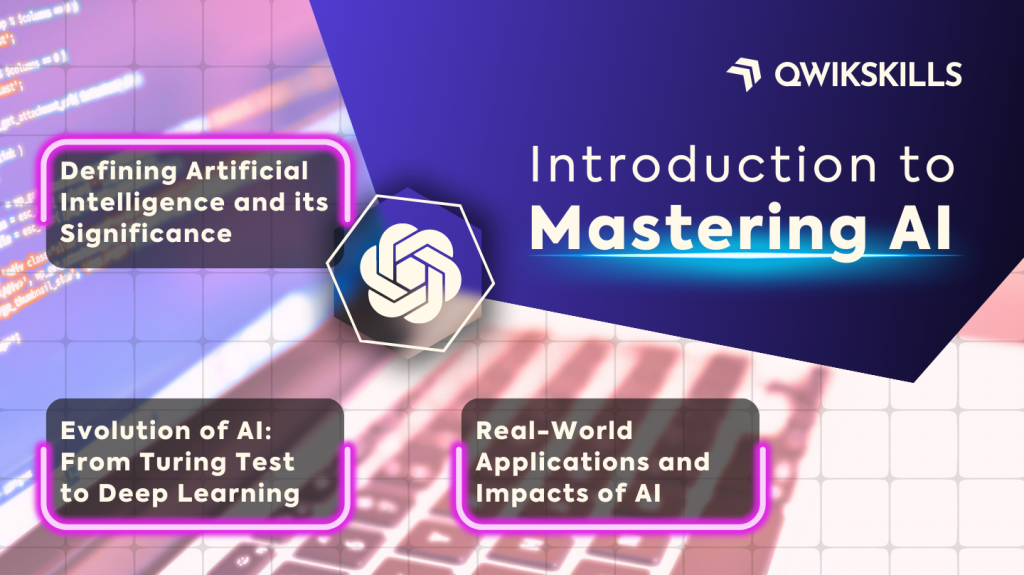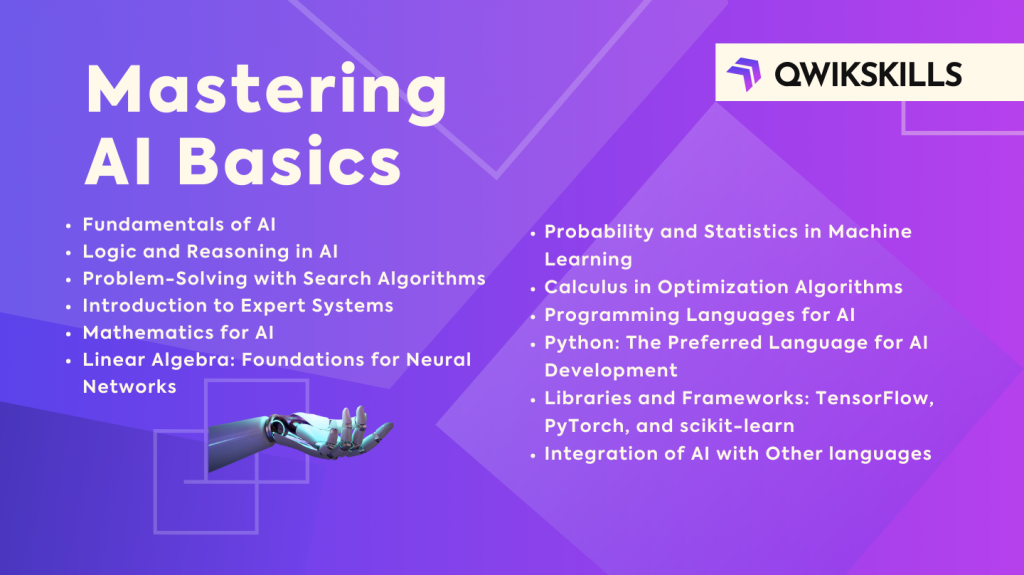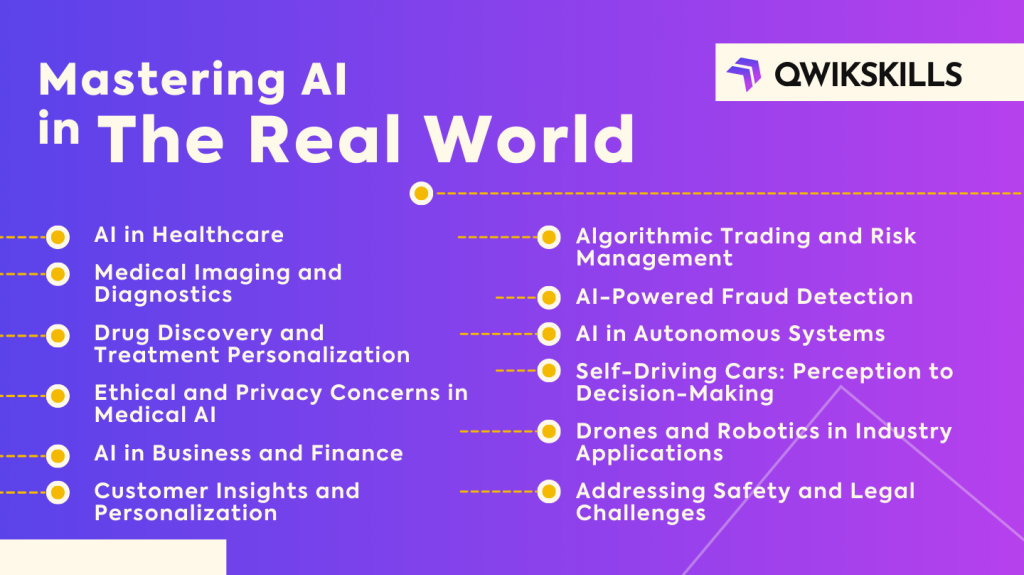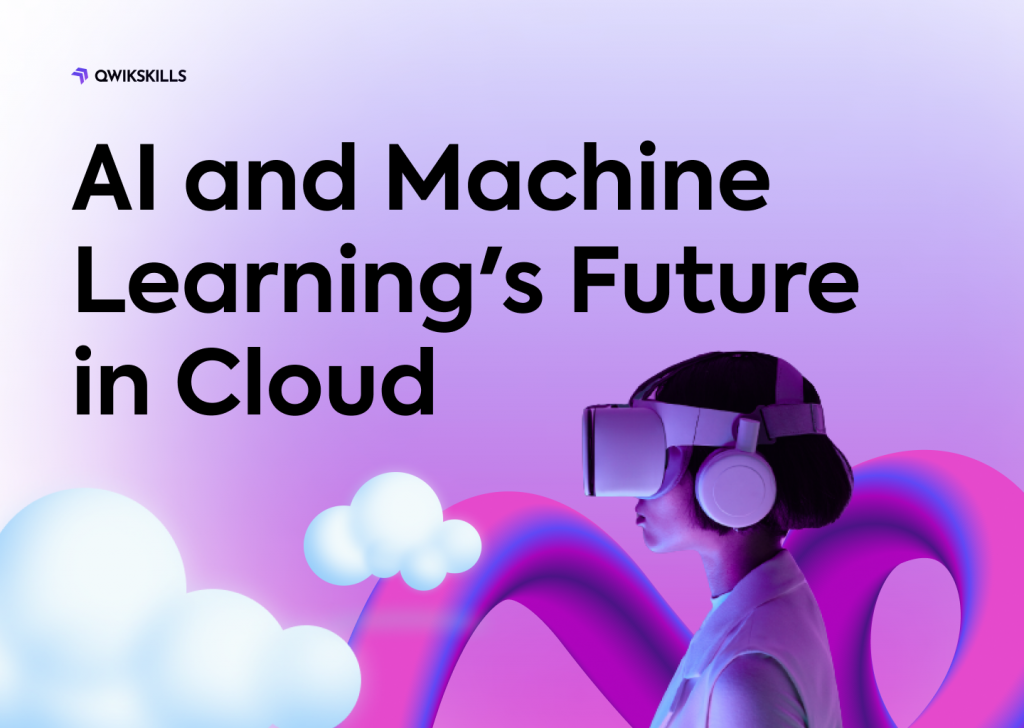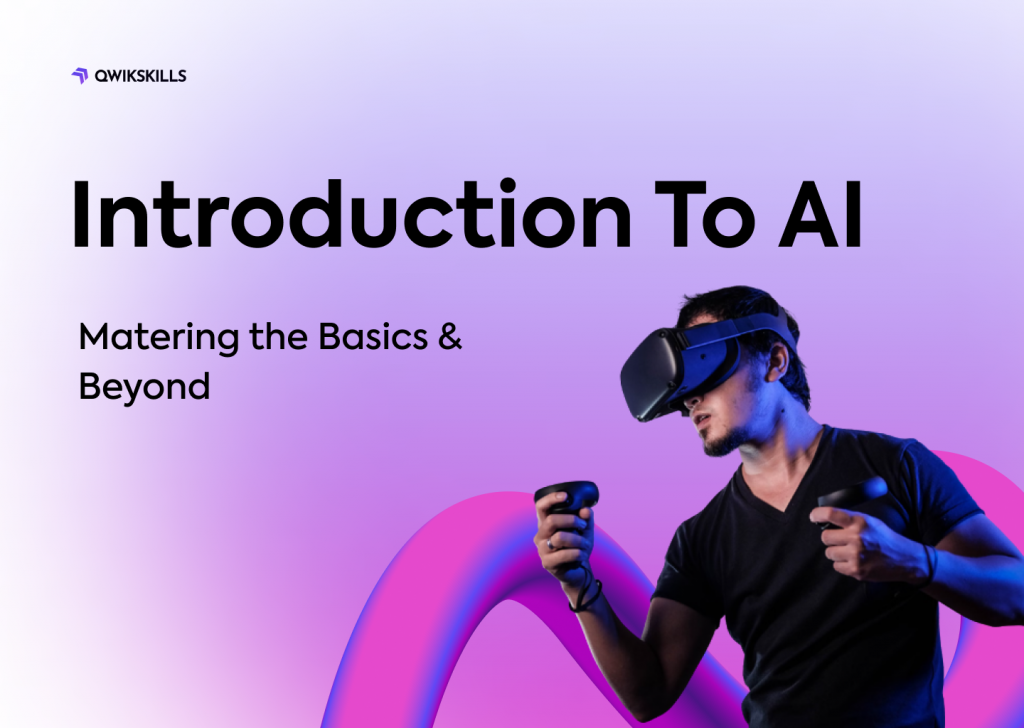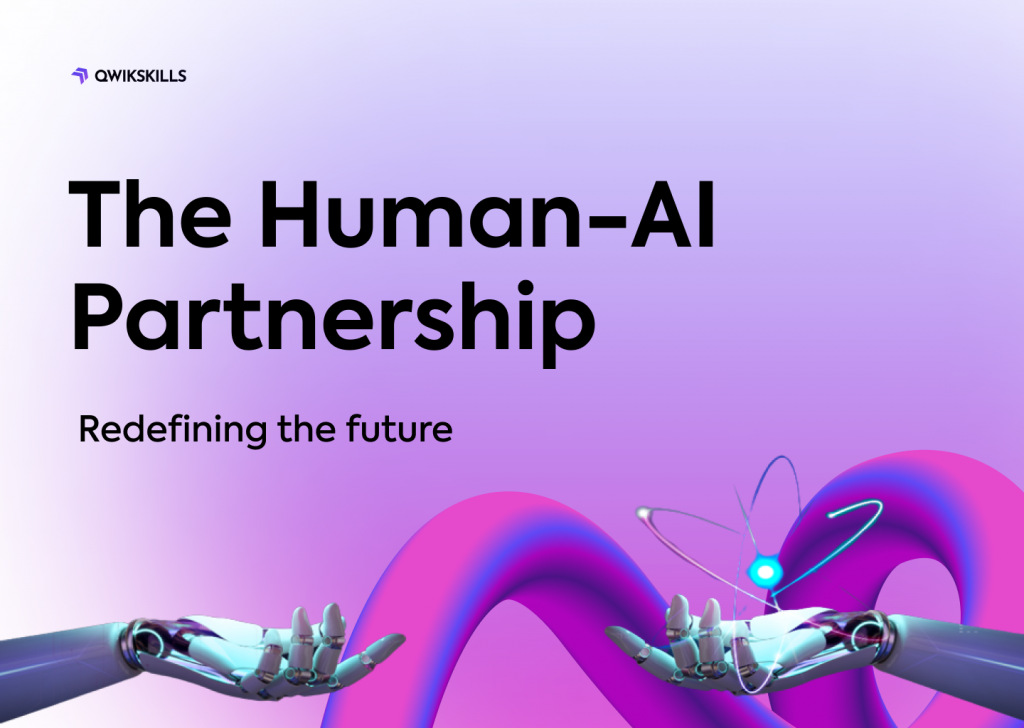Welcome to the exciting world of artificial intelligence (AI), where machines simulate human intelligence to perform tasks that were once thought to be reserved for human minds. From understanding natural language to analyzing complex data patterns, AI has revolutionized industries and transformed the way we live, work, and interact. In this comprehensive guide, we’ll take you on a journey from the basics of Mastering AI course to advanced concepts, equipping you with the knowledge you need to navigate this dynamic field.
Introduction to Mastering AI
Defining Artificial Intelligence and its Significance
Artificial Intelligence, often abbreviated as AI, refers to the ability of machines to imitate human cognitive functions such as learning, problem-solving, reasoning, and decision-making. This technology holds immense significance as it empowers computers to perform tasks that traditionally require human intelligence, ranging from speech recognition and language translation to image analysis and autonomous driving.
Evolution of AI: From Turing Test to Deep Learning
The journey of AI began with the famous Turing Test proposed by Alan Turing in the 1950s, which aimed to determine a machine’s ability to exhibit intelligent behavior indistinguishable from that of a human. Over the years, AI has evolved through different phases, including symbolic AI, machine learning, and the current breakthrough era of deep learning. Deep learning, fueled by neural networks, has led to remarkable achievements in image recognition, language processing, and game playing.
Real-World Applications and Impacts of AI
AI’s impact can be seen across various industries. In healthcare, AI assists in medical imaging analysis, enabling early disease detection. Business and finance benefit from Mastering AI-driven customer insights, algorithmic trading, and fraud detection. Autonomous systems like self-driving cars and drones are becoming a reality, transforming transportation and logistics. However, AI also brings ethical and privacy concerns that need careful consideration.
Building Blocks of AI
Understanding Machine Learning, Deep Learning, and Neural Networks
At the core of AI lies machine learning (ML), a subset that enables systems to learn from data and improve their performance over time. Deep learning, a specialized form of ML, employs neural networks inspired by the human brain’s structure. These networks consist of interconnected nodes, or neurons, that process and analyze data, making them capable of complex tasks like image and speech recognition.
Exploring Natural Language Processing (NLP) and Computer Vision
Natural Language Processing (NLP) empowers machines to understand, interpret, and generate human language. This has led to advancements in chatbots, language translation, and sentiment analysis. On the other hand, Computer Vision enables machines to interpret and understand visual information from the world, powering applications like facial recognition and object detection.
Role of Data in AI: Big Data and Data Preprocessing
Data serves as the lifeblood of AI systems. Big data, characterized by its volume, velocity, and variety, provides the raw material for AI models. However, data preprocessing is crucial to clean, organize, and transform raw data into a suitable format for training and analysis. This step ensures the quality and effectiveness of AI algorithms.
Mastering AI Basics
Fundamentals of AI
The fundamentals of Mastering AI delve into the principles that underpin intelligent behavior. This includes areas like knowledge representation, reasoning, and problem-solving. AI systems use various techniques, including rule-based systems, to emulate human-like decision-making processes.
Logic and Reasoning in AI
Logic and reasoning form the basis of AI’s ability to draw conclusions and make inferences. Symbolic logic, which uses symbols and rules to represent and manipulate information, plays a significant role in this process. It enables AI systems to deduce logical outcomes from given premises.
Problem-Solving with Search Algorithms
Search algorithms are crucial for AI’s problem-solving capabilities. These algorithms explore possible solutions within a problem space to find the best outcome. Techniques like breadth-first search and depth-first search are used to navigate through various options and reach optimal solutions.
Introduction to Expert Systems
Expert systems mimic the expertise of human specialists in a specific domain. These systems use knowledge bases and inference engines to provide recommendations or solutions to complex problems. They have applications in areas like medical diagnosis and technical troubleshooting.
Mathematics for AI
Mathematics is the foundation of AI algorithms. Linear algebra is essential for understanding neural networks, while probability and statistics play a vital role in machine learning algorithms. Calculus is used in optimization processes, enabling AI models to find the best parameters.
Linear Algebra: Foundations for Neural Networks
Linear algebra provides the mathematical framework for understanding neural networks. Concepts like matrices and vectors are used to represent data and transformations within these networks. This knowledge is fundamental for grasping the architecture and operation of neural networks.
Probability and Statistics in Machine Learning
Probability and statistics enable AI systems to make informed decisions in uncertain situations. Concepts like probability distributions, mean, and variance are integral to training algorithms and assessing model performance.
Calculus in Optimization Algorithms
Optimization algorithms aim to minimize or maximize a certain objective function. Calculus, particularly derivatives, is used to find the slope of the function and determine the direction in which adjustments should be made to reach the optimal solution.
Programming Languages for AI
Python: The Preferred Language for AI Development
Python has emerged as the de facto programming language for AI development. Its simplicity, readability, and extensive libraries make it ideal for implementing AI algorithms and working with data. Python’s versatility allows developers to prototype and deploy AI solutions effectively.
Libraries and Frameworks: TensorFlow, PyTorch, and scikit-learn
Libraries and frameworks provide pre-built tools and functions that expedite AI development. TensorFlow and PyTorch are prominent deep learning frameworks, while scikit-learn offers a wide range of machine learning algorithms for various tasks.
Integration of AI with Other Languages
While Python dominates AI development, other languages like R and Julia also find applications in specific AI tasks. R excels in data analysis and visualization, while Julia’s high performance is valuable for complex calculations.
Journey through Machine Learning
Supervised Learning
Supervised learning involves training AI models on labeled data, where the input-output relationships are explicitly provided.
Regression Analysis: Predicting Continuous Values
Regression analysis is used to predict numerical outcomes based on input variables. Linear regression, for instance, establishes a linear relationship between inputs and outputs, enabling predictions within a continuous range.
Classification Algorithms: From Decision Trees to Support Vector Machines
Classification algorithms categorize input data into predefined classes or labels. Decision trees, Random Forests, and Support Vector Machines are techniques used to create decision boundaries that separate different classes.
Ensembles: Boosting and Random Forests
Ensemble methods combine multiple models to improve prediction accuracy. Boosting algorithms like AdaBoost enhance the performance of weak learners, while Random Forests create a consensus of decision trees.
Unsupervised Learning
Unsupervised learning involves training models on unlabeled data to identify patterns and structures. Clustering techniques group similar data points together, while dimensionality reduction reduces the complexity of data by retaining essential features.
Clustering Techniques: K-Means, Hierarchical Clustering, DBSCAN
K-Means clustering divides data points into clusters based on similarity. Hierarchical clustering creates a tree-like structure of clusters, and DBSCAN identifies dense regions within data, useful for outlier detection.
Dimensionality Reduction: PCA and t-SNE
Dimensionality reduction techniques reduce the number of features in a dataset while preserving its essential characteristics. Principal Component Analysis (PCA) and t-Distributed Stochastic Neighbor Embedding (t-SNE) are widely used methods.
Anomaly Detection Approaches
Anomaly detection identifies rare and unusual patterns in data. It is used in fraud detection, network security, and industrial quality control. Isolation Forests and One-Class SVM are popular algorithms for anomaly detection.
Reinforcement Learning
Concepts of Reinforcement Learning
Reinforcement learning revolves around an agent learning to take actions in an environment to maximize cumulative rewards. It involves exploration and exploitation strategies to find optimal policies.
Markov Decision Processes and Q-Learning
Markov Decision Processes (MDPs) provide a mathematical framework for modeling decision-making problems. Q-Learning is a widely used algorithm in reinforcement learning, enabling agents to learn action-value functions and make informed decisions.
Applications in Gaming and Robotics
Reinforcement learning has found remarkable applications in gaming and robotics. AI agents trained through reinforcement learning have achieved superhuman performance in games like Go and Dota 2. In robotics, reinforcement learning enables tasks like robotic arm control and autonomous navigation.
Deep Dive into Neural Networks
Neural Network Basics
Neural networks are inspired by the human brain’s neural connections. They consist of layers of interconnected nodes, each processing and transforming data. Neural networks excel at tasks like image and speech recognition due to their ability to capture complex patterns.
Perceptrons and Activation Functions
Perceptrons are the building blocks of neural networks. Activation functions introduce non-linearity to neural networks, allowing them to model complex relationships in data.
Feedforward Neural Networks
Feedforward neural networks, also known as multilayer perceptrons, consist of an input layer, hidden layers, and an output layer. They process data through multiple layers of transformations, enabling complex feature extraction.
Backpropagation: Training Neural Networks
Backpropagation is the foundation of training neural networks. It involves iteratively adjusting the network’s weights based on the error between predicted and actual outputs. This process fine-tunes the network’s ability to make accurate predictions.
Convolutional Neural Networks (CNNs)
Convolutional Neural Networks (CNNs) revolutionized image analysis. They use convolutional layers to automatically learn hierarchical features from images, enabling tasks like object detection, image segmentation, and style transfer.
Understanding Image Data and Convolutional Layers
CNNs process image data by convolving learned filters over the input image. This process extracts features at different scales and orientations, allowing the network to capture intricate patterns.
CNN Architectures: LeNet, AlexNet, and ResNet
Various CNN architectures have emerged over time. LeNet, AlexNet, and ResNet are notable examples, each introducing innovations that enhance feature extraction, training efficiency, and network depth.
Transfer Learning with CNNs
Transfer learning involves using a pre-trained CNN on a new task with limited data. This technique leverages the learned features of the pre-trained model to achieve good performance on the new task.
Recurrent Neural Networks (RNNs)
Handling Sequential Data with RNNs
Recurrent Neural Networks (RNNs) excel at processing sequential data, such as time series and natural language. They maintain a hidden state that captures context from previous inputs, enabling the network to understand sequences.
Long Short-Term Memory (LSTM) Networks
LSTM networks are a specialized type of RNN designed to address the vanishing gradient problem. They maintain a cell state that selectively retains or forgets information, allowing them to capture long-range dependencies in data.
Applications in Natural Language Processing
RNNs and LSTM networks play a crucial role in natural language processing (NLP). They enable tasks like language modeling, sentiment analysis, and machine translation by understanding the sequential nature of text.
Advanced AI Concepts
Natural Language Processing (NLP)
Natural Language Processing (NLP) focuses on enabling machines to understand and generate human language. This field encompasses tasks like text classification, named entity recognition, and sentiment analysis.
Text Preprocessing and Tokenization
Text preprocessing involves cleaning and transforming raw text data to a usable format. Tokenization breaks text into individual words or tokens, a crucial step in understanding language semantics.
Word Embeddings: Word2Vec and GloVe
Word embeddings convert words into numerical vectors, capturing semantic relationships between words. Word2Vec and GloVe are popular techniques that generate meaningful word embeddings.
Recurrent Neural Networks for Language Modeling
Recurrent Neural Networks (RNNs) are fundamental for language modeling. They allow AI models to predict the likelihood of a word given the preceding context, enabling applications like autocompletion and machine translation.
Generative Adversarial Networks (GANs)
The GAN Architecture: Generator and Discriminator
Generative Adversarial Networks (GANs) consist of two components: the generator and the discriminator. The generator creates new data samples, while the discriminator evaluates their authenticity.
Training GANs: Challenges and Solutions
Training GANs can be challenging due to the balance between the generator and discriminator. Techniques like Wasserstein GANs and progressive training have been developed to stabilize and improve GAN training.
Creative Applications: Art Generation, Style Transfer
GANs have creative applications, including art generation and style transfer. They can generate images, music, and even text that exhibit artistic qualities, contributing to the intersection of AI and creative expression.
Explainable AI (XAI)
Importance of Interpretable AI
Explainable AI (XAI) focuses on making AI models’ decision-making processes transparent and interpretable. This is crucial in applications where trust, accountability, and ethical considerations are paramount.
Methods for Model Interpretability
Various techniques aim to make AI models more interpretable. This includes generating feature importance scores, visualizing model internals, and providing human-readable explanations for predictions.
Ethical Considerations in AI Decision-Making
As AI systems influence critical decisions in areas like finance, healthcare, and criminal justice, ethical considerations are vital. Ensuring fairness, transparency, and accountability in Mastering AI in decision-making is an ongoing challenge.
Mastering AI in the Real World
AI in Healthcare
AI’s impact on healthcare is profound. Medical imaging analysis aids in diagnosing diseases like cancer, while AI-powered algorithms personalize treatment plans and drug discovery processes. However, addressing ethical and privacy concerns is crucial.
Medical Imaging and Diagnostics
AI assists in medical image analysis, enabling early and accurate disease detection. Image segmentation, lesion detection, and anomaly identification are enhanced by AI algorithms.
Drug Discovery and Treatment Personalization
AI accelerates drug discovery by predicting molecular interactions and identifying potential drug candidates. Personalized treatment plans are devised using patient data, optimizing outcomes and minimizing side effects.
Ethical and Privacy Concerns in Medical AI
As AI systems handle sensitive medical data, ensuring patient privacy, data security, and unbiased decision-making are significant challenges. Regulatory frameworks must be established to address these concerns.
AI in Business and Finance
AI transforms business and finance through customer insights, algorithmic trading, and fraud detection. Customer preferences are analyzed to provide personalized experiences, while AI-driven trading strategies manage risk effectively.
Customer Insights and Personalization
AI analyzes customer data to gain insights into preferences and behavior. This information is leveraged to tailor marketing strategies, improve customer experiences, and drive business growth.
Algorithmic Trading and Risk Management
Algorithmic trading utilizes AI models to make rapid and data-driven trading decisions. These systems analyze market data, predict trends, and execute trades with minimal human intervention.
AI-Powered Fraud Detection
AI detects fraudulent activities by analyzing patterns and anomalies in large datasets. Machine learning models identify unusual behaviors and transactions, preventing financial losses.
AI in Autonomous Systems
Self-Driving Cars: Perception to Decision-Making
AI powers self-driving cars by interpreting sensor data, recognizing objects, and making real-time decisions. Computer vision, machine learning, and sensor fusion technologies are crucial components of autonomous vehicles.
Drones and Robotics in Industry Applications
Drones and robots equipped with AI technology are used in industries like agriculture, construction, and manufacturing. They perform tasks such as crop monitoring, surveying, and repetitive assembly operations.
Addressing Safety and Legal Challenges
Autonomous systems bring challenges related to safety and legal liability. Ensuring reliable decision-making, preventing accidents, and defining legal frameworks for liability are essential in the development and deployment of AI-driven autonomous systems.
FAQs about Mastering Artificial Intelligence
What are the key components of AI?
Artificial intelligence comprises various components, including machine learning, natural language processing, computer vision, and robotics. These components work together to enable machines to understand, learn from, and interact with their environment.
Is programming knowledge necessary for mastering AI?
Yes, programming knowledge is crucial for mastering AI. Programming languages like Python are used to implement AI algorithms, build models, and analyze data. Proficiency in programming empowers you to bring AI concepts to life.
What is the difference between supervised and unsupervised learning?
In supervised learning, models are trained on labeled data, where inputs are associated with corresponding outputs. Unsupervised learning, on the other hand, involves training on unlabeled data to identify patterns and structures within the data.
How does reinforcement learning differ from other machine learning paradigms?
Reinforcement learning focuses on training agents to make decisions in an environment to maximize cumulative rewards. Unlike supervised learning, reinforcement learning involves exploration and trial-and-error learning strategies.
Can you provide real-world examples of AI applications in healthcare?
Certainly! AI is used in medical imaging analysis to detect diseases like cancer from X-rays and MRI scans. It also personalizes treatment plans by analyzing patient data, recommending tailored therapies and medications. Additionally, AI assists in drug discovery by predicting molecular interactions and identifying potential drug candidates.
Conclusion
Congratulations on completing your journey through the realm of artificial intelligence! From mastering the basics of Mastering AI and machine learning to delving into advanced concepts like neural networks and reinforcement learning, you’ve gained valuable insights into this dynamic and transformative field. As Mastering AI continues to shape industries and our daily lives, remember that innovation and continuous learning are key to unlocking its full potential. Whether you’re exploring AI’s creative applications or addressing ethical considerations, you’re poised to contribute to the ongoing evolution of artificial intelligence.
Ready to embark on your AI journey? Dive into the world of artificial intelligence with QwikSkills. Master from basics to advanced concepts, shaping the future through innovation. Start today and transform your understanding of AI!


